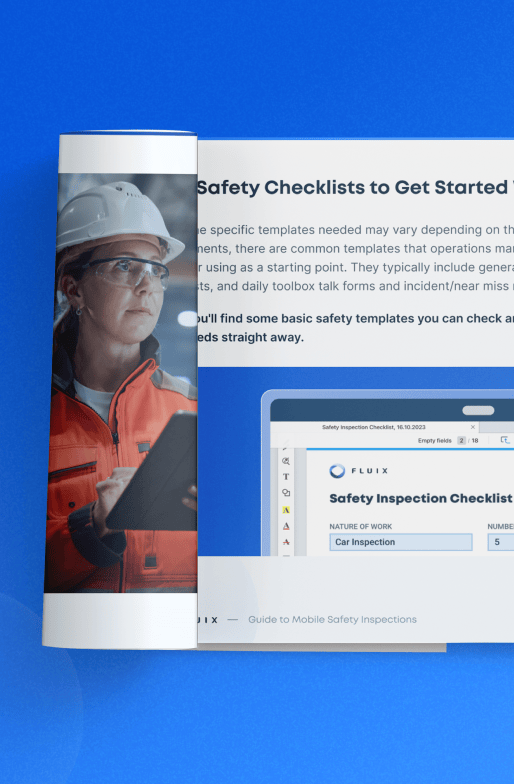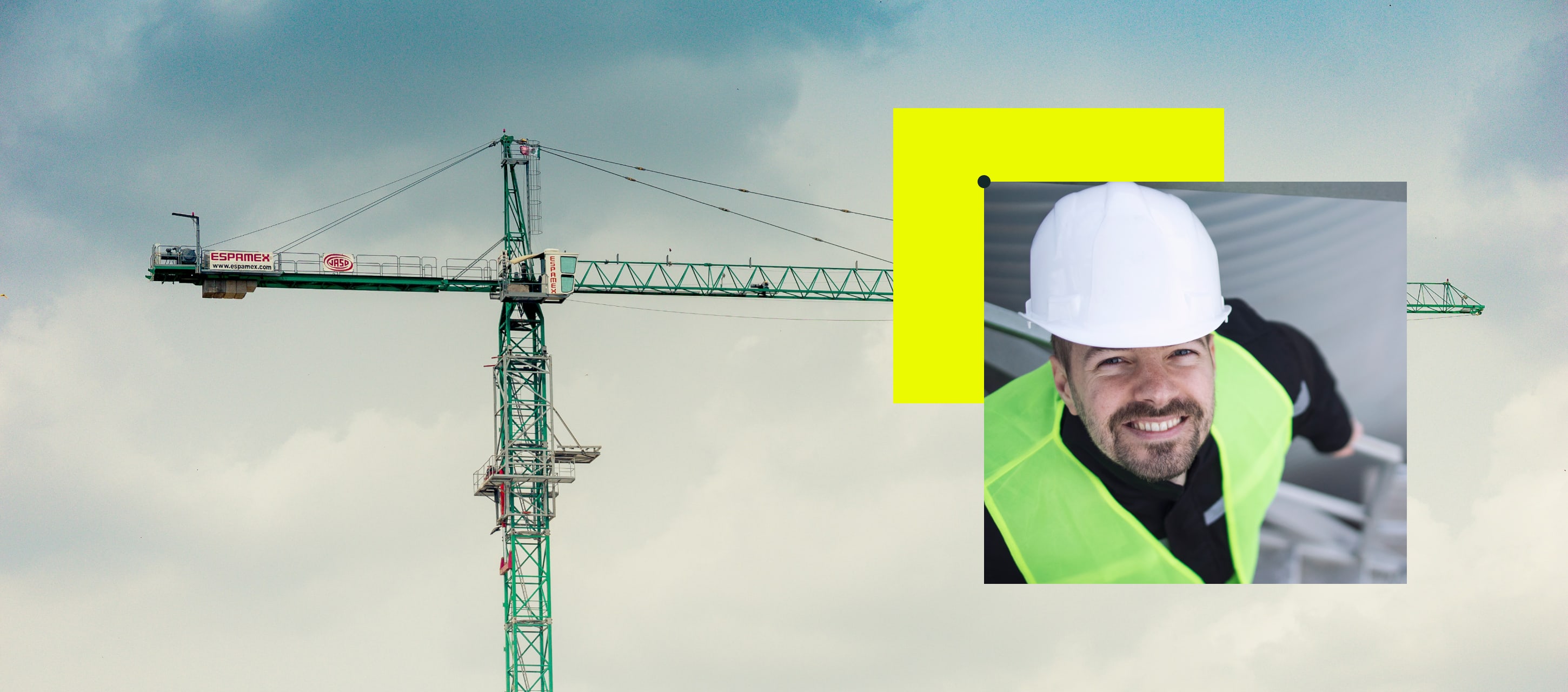Construction sites are dynamic environments where potential hazards lurk around every corner. That’s why ensuring safety is essential for protecting workers and preventing devastating accidents.
This process is complex, and you must understand the concept of construction safety before deciding what goes into your prevention strategies.
Contents:
Defining Construction Safety
Construction site safety encompass the principles, regulations, and practices aimed at protecting workers, the public, and the environment from hazards inherent in construction projects.
It includes identifying and mitigating risks, ensuring proper use of equipment and personal protective equipment, establishing clear safety protocols, and conducting regular safety inspections.
The ultimate goal? To create a safe work environment where zero incidents, injuries, or fatalities occur, leading to the successful and safe completion of construction projects.
Why Is Safety in Construction Important?
With its inherent risks, the construction industry demands a relentless focus on safety. Did you know that construction injuries account for nearly 20% of all workplace fatalities in the U.S.? And accidents come with high human and financial costs.
Proactive safety measures are what protects workers and promote morale, increasing productivity in construction. To comprehend the benefits of safety, you must first understand the consequences when safety is lacking.
Human Cost of Construction Accidents
The human cost of construction accidents is immeasurable. Workers may suffer injuries from broken bones and amputations to traumatic brain injuries and paralysis. These can lead to permanent disability, chronic pain, and a diminished quality of life.
In the worst cases, construction accidents result in fatalities, leaving families devastated and communities grieving. Safety in construction is necessary to reduce the likelihood of injuries and their potential life-altering toll.
Financial Implications of Unsafe Work Sites
While expansive construction safety initiatives can reduce company expenses, unsafe work sites carry a staggering financial burden.
Direct costs of accidents include medical expenses, workers’ compensation claims, lost wages, and potential legal fees or fines.
Indirect costs are even more substantial, including project delays, lost productivity due to downtime, damaged equipment, and the expense of hiring and training replacement workers. Furthermore, a poor safety record damages a company’s reputation, potentially hindering its ability to secure future bids and attract new talent.
Benefits of Safety on a Construction Site
A safe construction site fosters a positive and productive work environment. Workers with a strong sense of safety and clear guidance on best practices are more engaged. Which leads to increased productivity, reduced absenteeism, and lower turnover rates.
These advantages translate to projects completed on time, within budget, and with higher quality standards.
Also, a positive safety record attracts skilled workers and enables companies to exploit emerging construction trends. These trends often prioritize sustainability, technology integration, and worker-centric practices, further reinforcing the business benefits of a safe and healthy work environment.
The Ultimate Guide
to Safety Inspections
Checklists, tools, and best practices to help you meet the safety regulations for your industry


How to Evaluate Construction Site Safety
Building upon the foundation of a strong safety program requires ongoing evaluation to identify areas for improvement. It consists of the following phases:
1. Inspections and Audits
Inspections are the cornerstone of a robust evaluation process. Qualified personnel should conduct daily, weekly, and monthly check-ins using comprehensive checklists. These inspections should cover all aspects of the site, including:
- Worker compliance with PPE
- Proper use of equipment
- Adherence to safety procedures
- General housekeeping
Additionally, documents for safety such as inspection reports, safety checklists, and compliance records should be maintained and easily accessible. You need them to ensure that all protocols are followed, and to provide a clear record of safety practices and improvements over time.
2. Incident Reports and Investigations
Every incident, from minor near misses to serious accidents, should be promptly reported and thoroughly investigated. Construction firms should establish a system for reporting, preferably anonymous, to encourage workers to voice concerns without fear of retribution or reprisal.
Investigating incidents is essential to identifying the root causes and addressing issues to prevent future occurrences. Using OHS management software can streamline this process, making it easier to log, track, and analyze incident reports.
3. Worker Feedback and Communication
Open communication is vital for a successful construction safety evaluation. Supervisors should encourage workers to provide feedback on safety procedures, identify potential hazards, and report concerns.
Regular safety meetings, toolbox talks, and anonymous surveys are all effective ways to gather valuable worker input.
Incorporating jobsite photo documentation can enhance this process. Workers can use photos to visually report issues, highlight areas of concern, and document compliance with safety protocols.
Companies that incorporate worker feedback and photo documentation into their safety programs demonstrate a commitment to worker well-being and help foster a strong safety culture.
Read More Read More Going digital slashed Centuri’s reporting time by 50 – 75% annually
Essential Tips for Maintaining Site and Construction Worker Safety
Construction safety relies on several core tactics that ensure everyone on the job site stays safe and healthy. Let’s break these down:
Prioritize Worker Safety. This means creating an environment where safety is the top priority, and all decisions are made with worker protection in mind.
Conduct Practical Risk Assessments. Identify your metrics to measure safety, see what could go wrong and implement steps to prevent accidents.
Implement Controls. Once risks are identified, put controls in place to mitigate them. This can include physical barriers, safety protocols, and personal protective equipment (PPE).
Adher to Regulations. Make sure your team is familiar with and adheres to all relevant regulations. This also includes understanding and using construction abbreviations correctly to compliance with safety standards.
Provide Training and Education. Regularly scheduled training sessions help maintain a high level of awareness and readiness among the workforce.
Maintain Open Communication. Answer honestly – how open is your current communication culture? To manage risks, yuo should know about them in the first place. For this, people should feel comfortable reporting issues without fear of retaliation.
Be Proactive with Safety Planning. This should include emergency response procedures, clear responsibilities, and safe work practices.
Utilize Technology. Specialized field management software for construction teams can come in handy to streamline safety documentation, reporting, and communication.
Reflect on these strategies and think about your current practices. Are there areas where you could improve? By focusing on those that do need improvement, you can create a safer and more productive construction site. And remember – safety is a continuous process.
Managing Construction Safety with Fluix
Fluix is workflow automation software that offers a range of features designed to improve and streamline construction safety processes. From digital documents and workflow automationn to data analytics, our platform can help organize inspections and safety audits for you to make more informed safety decisions.
What more, Fluix’s mobile app ensures your team can update information on the go, useful for on-site inspections and real-time reporting. You can also share updates instantly to improve communication and collaboration and ensure everyone is on the same page and can quickly respond to safety issues.






